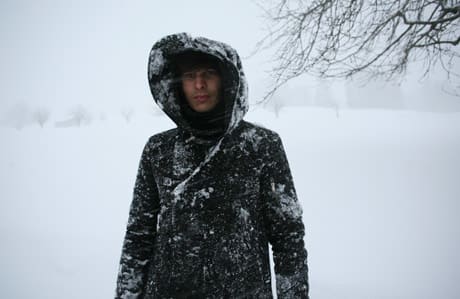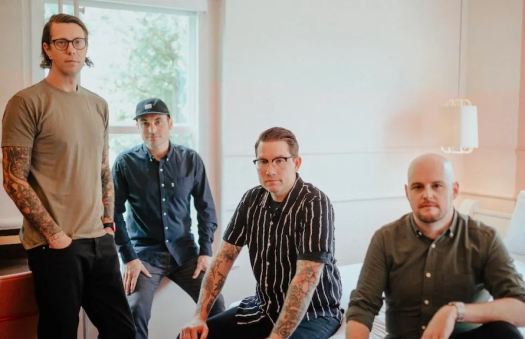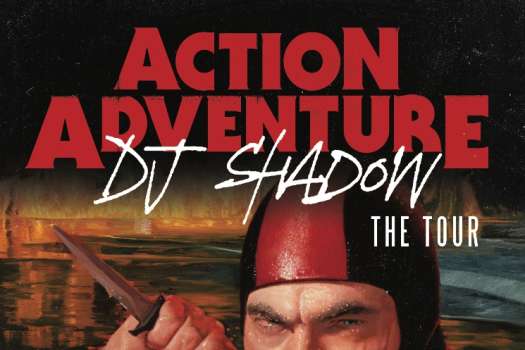Hendrik Weber's new symphonic work as Pantha Du Prince, in collaboration with the Bell Laboratory, Elements of Light, is one part classic Pantha techno and one part classical composition. Meant to be listened to as a single continuous work, the five-piece orchestration prominently features a carillon (an instrument heavier than any other in current existence, consisting of bronze bells of varying sizes), whose presence dominates the sonic palette of the album. Weber's creative theoretical and instrumental approach is unique, but the abrasive and connotative tonal qualities of the carillon often overshadow the colourful subtleties of the finer details of his delicate arrangements. The less bell-cluttered sounds of the album's opening and closing cuts resonate the most beautifully.
What drove you to use a unique instrument like the carillon so prominently on Elements of Light?
The carillon is an instrument of rare use so far in music history; I've had a fascination with it for a long time and visited several versions of it all over the world. The piece was thought of being played in several locations with the carillon. When we found the mobile version in Denmark, we only wanted to use that one, as the sound is so brilliant.
Can you describe the recording process for the album?
I started writing a classic Pantha track over a length of 44 minutes, we were then transcribing the samples, synths, beats and sounds into a score for classically trained musicians. We had rehearsals and a first gig in Oslo, and after a year of rehearsals in Berlin and a gig in a gallery, which was also in Berlin, we tried to find funding for a recording. The first idea was to release a live recording, but this would not be the best way to represent what I wanted, so we went into another rehearsal period and after that recorded in Oslo in a classic studio situation. Some parts are played together with a lot of intuition, other parts in the recording were played as overdubs, but everything you hear is played live in the studio.
From the initial conception of the idea for the album to the finished product, how long did it take to complete?
It is difficult to say. The first rehearsal was in August 2010, after we worked on and off on the material... I don't really know. We definitely spent a month recording and mixing it, but there was a lot of rehearsal and preparation time before that.
Were there any particular challenges to putting together the album that you encountered?
For me, it's still a collaboration, and it's about communication and giving away control over you material. The ensemble have the right to be a living organism — to make it alive it needs its own space and time. It's different from working with electronics and computer-based music.
Can you describe process of collaborating on the album? What parts were you personally responsible for and what were the others?
It was firstly a classic electronic techno track. After we replaced the samples with real instruments in written score, the lead melodies were replaced — field recordings as well — whereas the carillon was there from the beginning. I had the samples from the Oslo bell tower — each bell of the carillon on my keyboard to write melodies and be able to understand how the frequencies of an instrument like that can resonate and interact. We had one-tone melodies, sometimes two-tones, but that's because of the sound structure of the instrument. I was present for any musical and technical decisions, and also which instruments to use. The notation was Lars Petter Hagens' part: to find the right notes to be translated into a playable score.
Do you have plans to perform this material live? What will that entail?
Of course, the piece translates best live; it is an intense experience as a live show. We will play in Berlin, Leipzig, London and Lyon, and few more gigs next year. A lot of festivals are interested.
Is it a very expensive show to transport?
Not too much. It's like a normal live show. Bands have kind of similar productions; it is just special because of this sculpture, the carillon. We have to check stage specs before, of course; we will not be able to play it in small clubs. I do still play my solo shows with live sampling and live programming, but this I will tour as well next year.
What would you like listeners to take away from Elements of Light?
It was intended to be listened to in one piece — no single tracks, but one musical development — and I'd like it myself to be received that way, more like a DJ mix.
Is there a particular type of experience or feeling you would like people to have when listening to the piece?
It's a metaphor for light, and everybody should have his or her own approach. There is no specific message, just a lot of connected information.
What did you personally learn from creating this album?
To work with people — professional musicians can be very enriching. It's a different energy to work with; it is more human and directly pleasing. It gave me the possibility to free the concept of Pantha Du Prince into a different level. [Also, that] the easy way is not always the best way. Personally, all of us became friends!
What drove you to use a unique instrument like the carillon so prominently on Elements of Light?
The carillon is an instrument of rare use so far in music history; I've had a fascination with it for a long time and visited several versions of it all over the world. The piece was thought of being played in several locations with the carillon. When we found the mobile version in Denmark, we only wanted to use that one, as the sound is so brilliant.
Can you describe the recording process for the album?
I started writing a classic Pantha track over a length of 44 minutes, we were then transcribing the samples, synths, beats and sounds into a score for classically trained musicians. We had rehearsals and a first gig in Oslo, and after a year of rehearsals in Berlin and a gig in a gallery, which was also in Berlin, we tried to find funding for a recording. The first idea was to release a live recording, but this would not be the best way to represent what I wanted, so we went into another rehearsal period and after that recorded in Oslo in a classic studio situation. Some parts are played together with a lot of intuition, other parts in the recording were played as overdubs, but everything you hear is played live in the studio.
From the initial conception of the idea for the album to the finished product, how long did it take to complete?
It is difficult to say. The first rehearsal was in August 2010, after we worked on and off on the material... I don't really know. We definitely spent a month recording and mixing it, but there was a lot of rehearsal and preparation time before that.
Were there any particular challenges to putting together the album that you encountered?
For me, it's still a collaboration, and it's about communication and giving away control over you material. The ensemble have the right to be a living organism — to make it alive it needs its own space and time. It's different from working with electronics and computer-based music.
Can you describe process of collaborating on the album? What parts were you personally responsible for and what were the others?
It was firstly a classic electronic techno track. After we replaced the samples with real instruments in written score, the lead melodies were replaced — field recordings as well — whereas the carillon was there from the beginning. I had the samples from the Oslo bell tower — each bell of the carillon on my keyboard to write melodies and be able to understand how the frequencies of an instrument like that can resonate and interact. We had one-tone melodies, sometimes two-tones, but that's because of the sound structure of the instrument. I was present for any musical and technical decisions, and also which instruments to use. The notation was Lars Petter Hagens' part: to find the right notes to be translated into a playable score.
Do you have plans to perform this material live? What will that entail?
Of course, the piece translates best live; it is an intense experience as a live show. We will play in Berlin, Leipzig, London and Lyon, and few more gigs next year. A lot of festivals are interested.
Is it a very expensive show to transport?
Not too much. It's like a normal live show. Bands have kind of similar productions; it is just special because of this sculpture, the carillon. We have to check stage specs before, of course; we will not be able to play it in small clubs. I do still play my solo shows with live sampling and live programming, but this I will tour as well next year.
What would you like listeners to take away from Elements of Light?
It was intended to be listened to in one piece — no single tracks, but one musical development — and I'd like it myself to be received that way, more like a DJ mix.
Is there a particular type of experience or feeling you would like people to have when listening to the piece?
It's a metaphor for light, and everybody should have his or her own approach. There is no specific message, just a lot of connected information.
What did you personally learn from creating this album?
To work with people — professional musicians can be very enriching. It's a different energy to work with; it is more human and directly pleasing. It gave me the possibility to free the concept of Pantha Du Prince into a different level. [Also, that] the easy way is not always the best way. Personally, all of us became friends!




